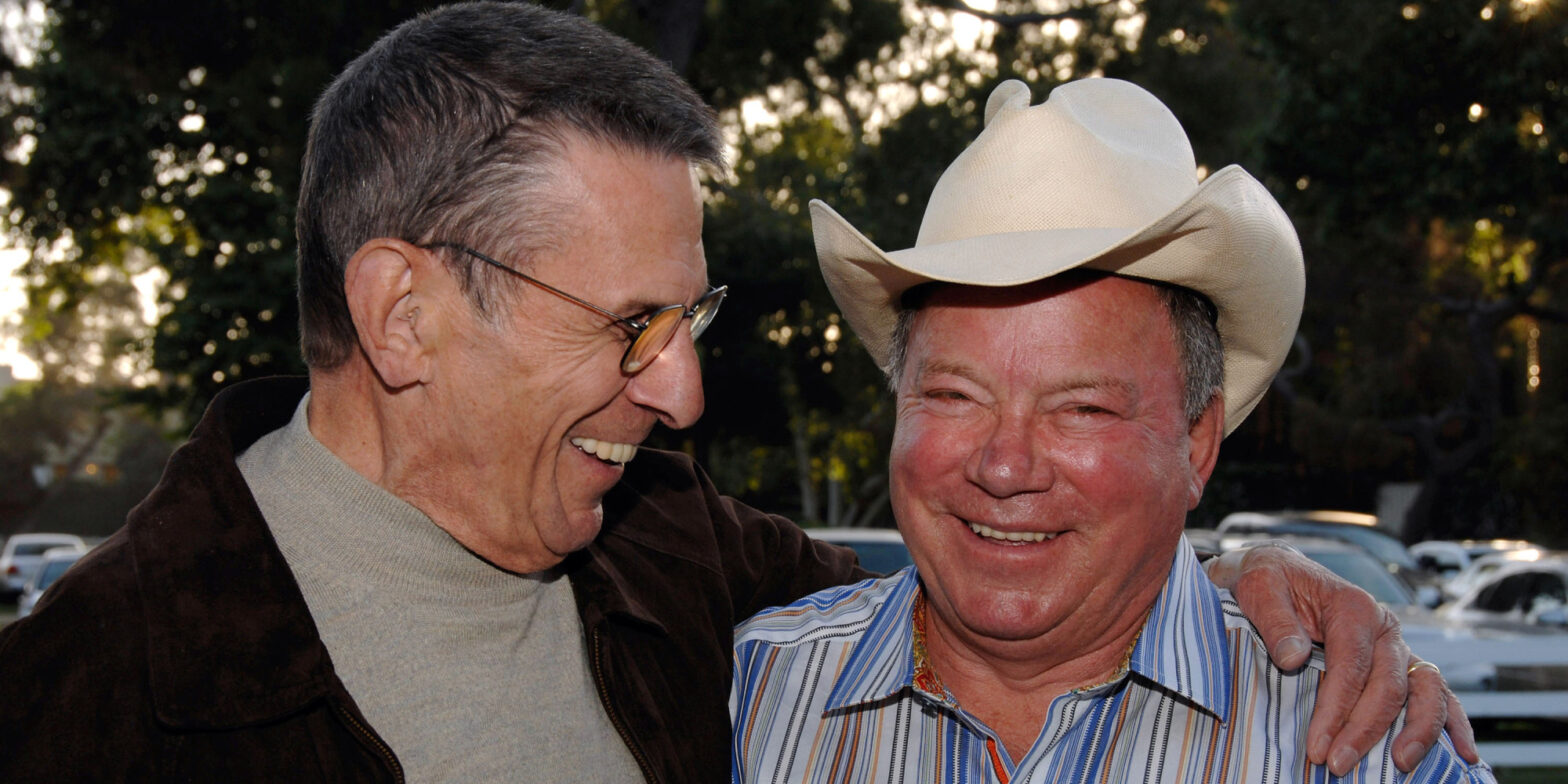William Shatner published a new autobiography this week, Live Long and… What I Learned Along the Way. In the book, Shatner reveals that, when Leonard Nimoy died in 2015, he didn’t attend Nimoy’s funeral because of a Red Cross fundraiser in Florida scheduled for the same night as the funeral but because he had been politely disinvited.
It was made clear to me that I was not welcome at his funeral. That was painful. I had an easy excuse. My closest friend was Leonard Nimoy. We were born four days apart and raised in Orthodox Jewish homes. We shared so much throughout our careers. I loved Leonard, and he used to refer to me as his brother. Yet at the end of his life and for reasons I still don’t know, he was not my friend. I would call him and he wouldn’t answer the phone or return any messages. He died and I didn’t feel welcome at his funeral.
Shatner’s earlier book, Leonard, a biography/personal reminiscence of Nimoy, made it clear that, for the last five years or so of Nimoy’s life, Shatner and Nimoy had no meaningful relationship, and I’m not surprised with the revelation that Shatner would have felt — and been — unwelcome at the funeral had he left the Red Cross fundraiser to attend the funeral.
Shatner, for his part, thought of Nimoy as a friend and a brother, but Nimoy had moved on and cut Shatner from his life. I understand Shatner’s bewilderment; it’s confusing when a friend ends a friendship because no reasons and answers are forthcoming, especially so in this case since Nimoy has died, denying Shatner the closure and understanding he wants. He will likely never have the answers he wants about why his best friend shut him out. At the same time, Nimoy felt that he neither needed nor wanted Shatner in his life, and he spent his final years with the people he wanted to be surrounded by, doing the things he wanted to do. As an outsider, I respect Nimoy’s choice in the matter and sympathize with Shatner at the same time.
Friendships end. People grow apart. People develop new interests and travel in new circles. People become separated by distance or death. People take their friendships for granted. Someone isn’t there when it matters. Something one considers trivial the other views as a slight, and a fissure forms that, over time, begins to grow. Friendships take work, and shared experiences, even fifty years of close association, may not suffice to bind two people together. Look at a thousand failed friendships and one would find a thousand different reasons for the failure. This isn’t meant to take away from Shatner’s genuine pain. He has to live every day with the sorrow of knowing that his closest friend cut him out of his life and, more importantly, he has to go on, unable to talk to his friend or make new memories with Nimoy.
I may pick up Shatner’s Live Long and…, though probably not for a little while. Shatner is an interesting character — I interviewed him a decade ago about a line of comics from a now-defunct publisher, and it was a delight — and he’s lived a fascinating life. He will carry the pain of the sundering of his friendship with Nimoy for the rest of his days, but I hope that Shatner treasures the good memories going forward, not dwelling on the bad.
